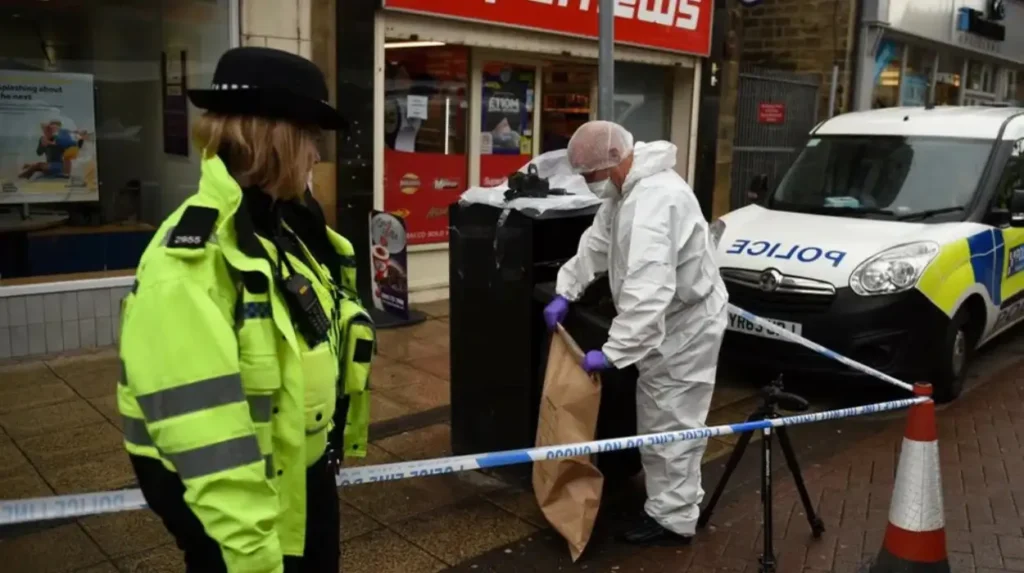Understanding what crime trends are in the UK is useful for legislators, the police, and the public. Knowing what crime is trending up, where the crime is worst, and how to allocate policing resources comes from looking at crime data. Social, legal, and economic changes have always caused increases, leaps back, and declines in crime rates over the past few decades in the UK. Through this article, we will discuss whether criminal behavior in the UK is trending up or down based on current statistics, experts’ points of view, and geographic areas covered.
Overview of Crime Trends in the UK
Patterns in crime trends in the UK have not been constant, with periods of increase and decline in crime trends, plus some areas where crime has risen and others that have seen slow increases or even declines in recent years, and then others. Crime trends can tell you a lot about how the same area has changed over the last few decades.
There are specific classes of crime that have sharply declined in the UK from around 2000, such as burglary and car theft, while there are also classes of crime on the rise, such as cybercrime, and throughout the COVID pandemic there was certainly some downward pressure on crime associated with lockdown periods, but other offenses broadly classified as fraud increased greatly in online scams. In order to get a clear picture of what is happening, the analysis needs to focus beyond overall crime statistics and look at different types or classes of crimes.

Crime Measurement in the UK
To understand if crime is on the rise or decline, it is important to understand how it is recorded. The UK relies on two main sources, police-recorded crime and the Crime Survey for England and Wales (CSEW), as the principal measure of crime. Police-recorded crimes refer to those crimes reported to and recorded by the police, while the CSEW refers to those crimes not reported to the police and involves interviewing households.
These two differing data collections, police-recorded crimes and household surveys, serve dedicated purposes and provide information that represents different stories on gradients of crime and perceptions regarding public safety.
Police Recorded Crime Data
Although police-recorded statistics tell us the number of reported crimes, there remains a great deal of unknown, as some crime goes unreported, leading actual levels of crime to be higher than shown in police-recorded statistics. Police statistics are published at least quarterly and have fairly extensive, regular breakdowns by type and locality.
Crime Survey for England and Wales
The CSEW is a large household survey that estimates the amount of crime that people aged sixteen and over experience, including crimes that may not have been reported to police. The CSEW is useful in looking at trends over time or looking at it from the victims’ perspective.

Current Crime Levels in the UK
New official reports show that crime levels in the UK are mixed. Some crimes, like burglary and car theft, are down from previous levels we have seen over the last decade. However, some crimes, like fraud, cybercrime, and violent crime, are at significantly higher levels. The latest figures from the four nations of the UK (England, Wales, Scotland, and Northern Ireland) suggest that right now, the overall number of total recorded crimes is about the same generally, but the type of crime is changing.
Increasing Offences
Crime has decreased in some areas of the UK steadily.
- Violent Offenses: Knife crime and serious assault have increased in some areas, primarily some major cities.
- Cybercrime and Fraud: Due to people’s universal use of technology as part of their everyday lives, a wider range of people are potentially at greater risk of online scams, digital fraud, or identity theft.
- Drug “Related” Offences: Some areas also demonstrate an increase in drug trafficking and associated offences.
This information demonstrates that some types of crime, specifically the traditional forms of crime, may be better controlled over sustained periods. Alternatively, newer and emerging forms of crime show increasing frequency.
Decreasing Offences
Not all areas are looking at increased crime.
- Burglary: A number of areas look to have steady reductions in burglaries in local areas. One reason may be security in the home is better than previously with better security alarms and cameras. Vehicle theft: New improved technology for locking vehicles has contributed to the decline in vehicle theft compared to the early 2000s.
- Vandalism: In some parts of the country, the number of incidents of property vandalism has declined due to community-led prevention efforts.
The reduction in these crimes demonstrates improvements in some aspects of crime prevention and policing.

Year-on-Year Changes
Year-on-year changes tell us something about short-term trends. In some years the increase in total recorded violent crime may have only been by a few percentage points, which has been offset by a similar decrease in the number of incidents of burglary. This shows that while there are increases in one crime type, there may be compensating decreases in some. Overall, total crime figures are holding fairly steady.
Public perception of crime trends and overall perception of crime
Many people believe crime is always getting higher, but perception and reality do not always match. Media portrayal of crime tends to highlight the most sensational stories, creating a perception that crime is continually getting worse.
The reality is that while some offenses are increasing, others have decreased, keeping total rates of crime steadier. In the UK, there is not a clear upwards or downwards movement for the crime rate. Rather, it is changed with respect to the types of offenses committed. While there has been some success in reducing some crimes, some crimes, especially cyber and violent crimes, require new methods in prevention and enforcement.


